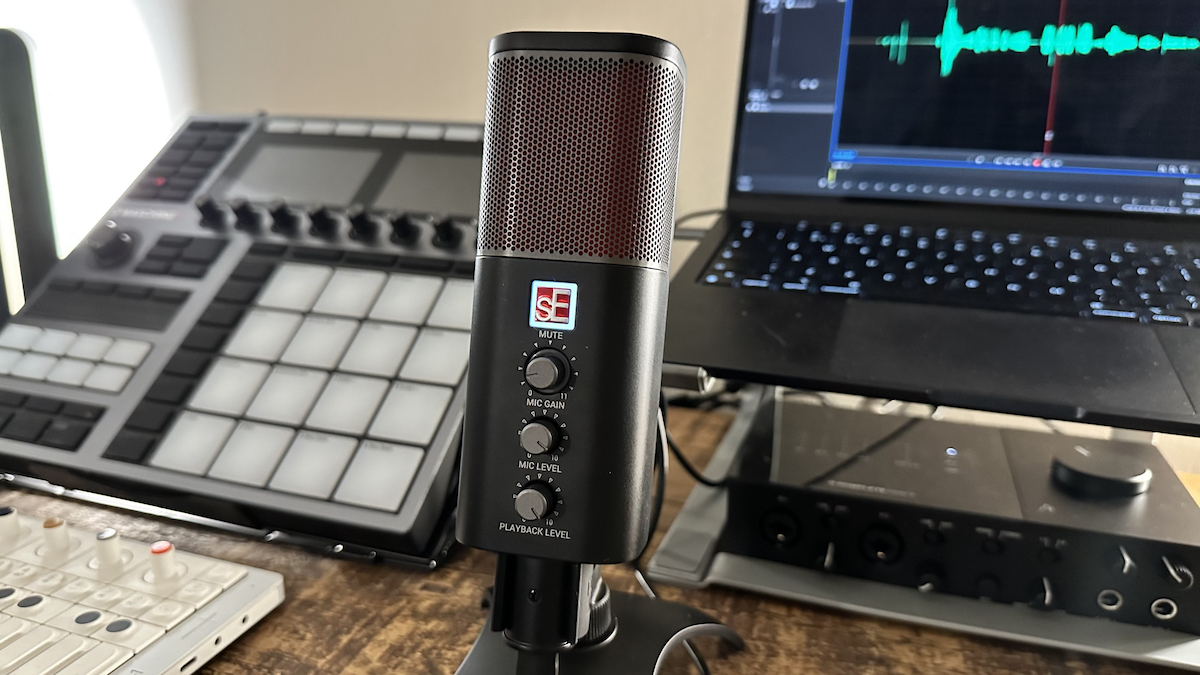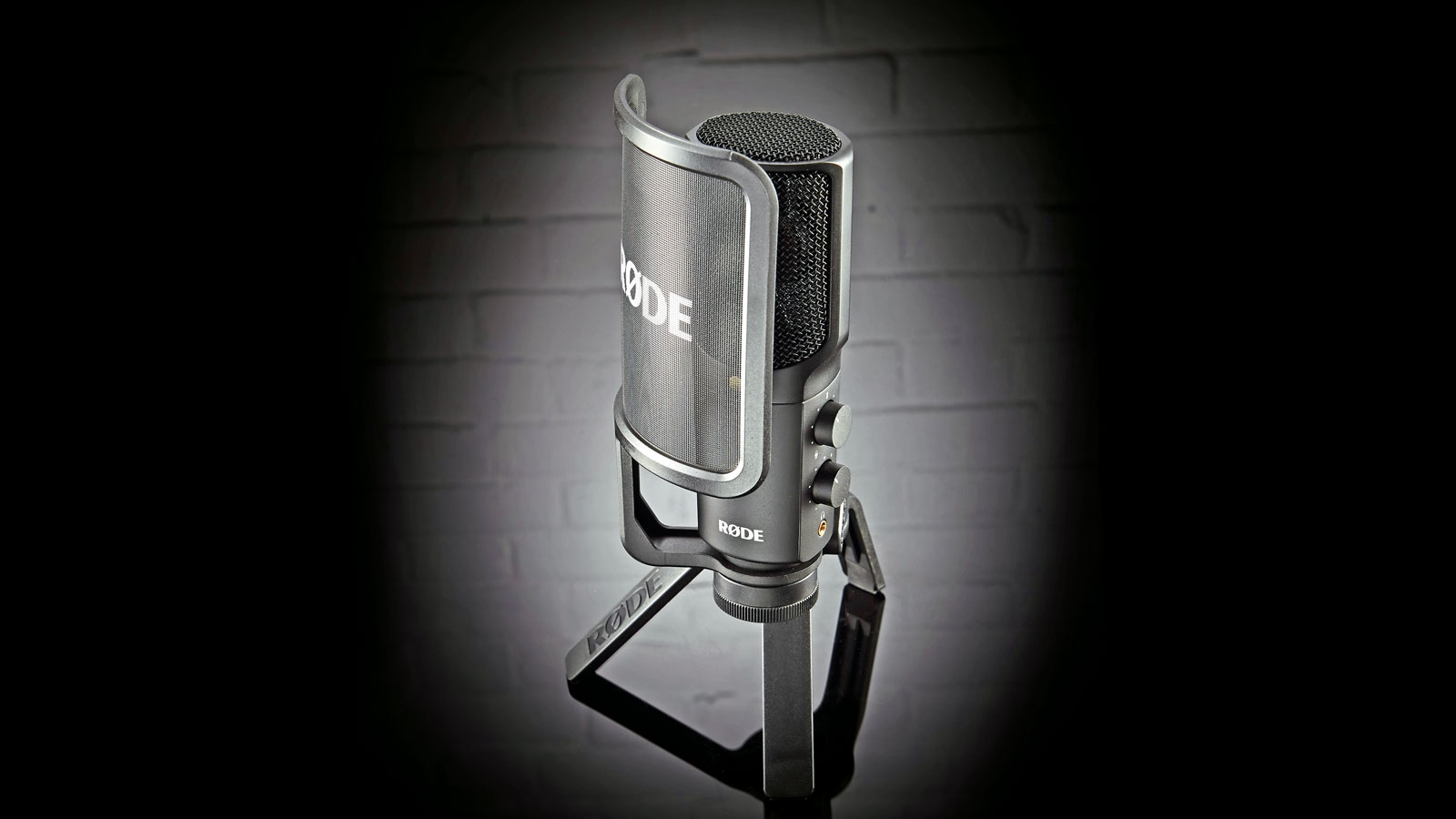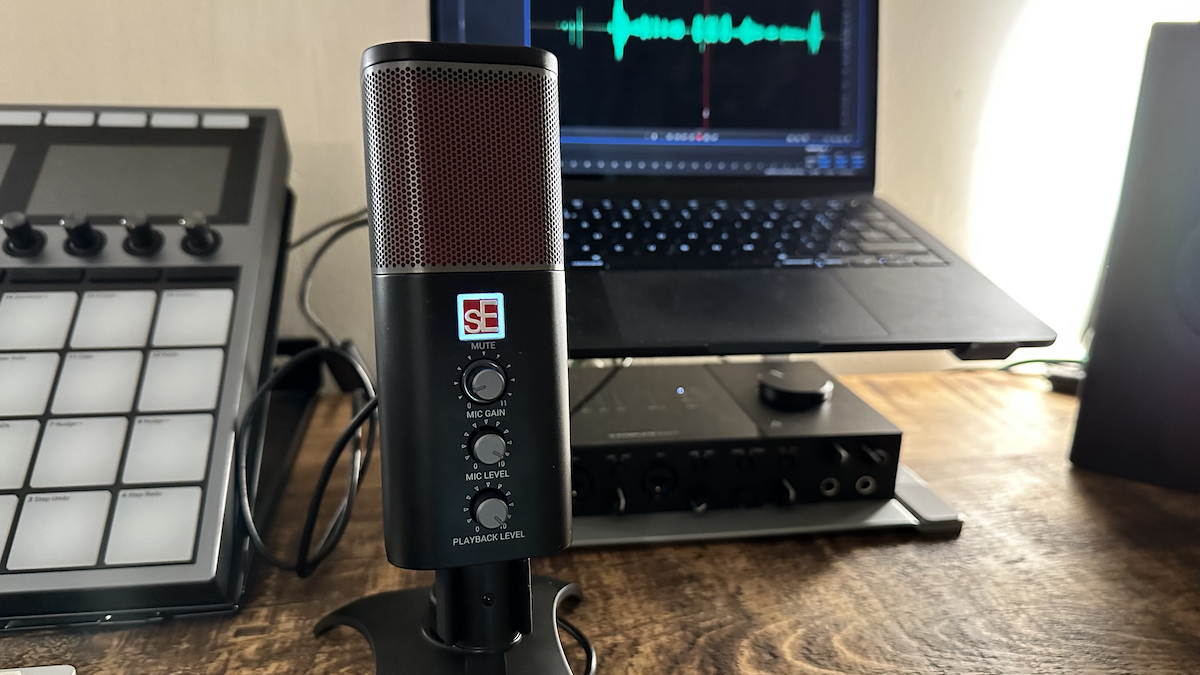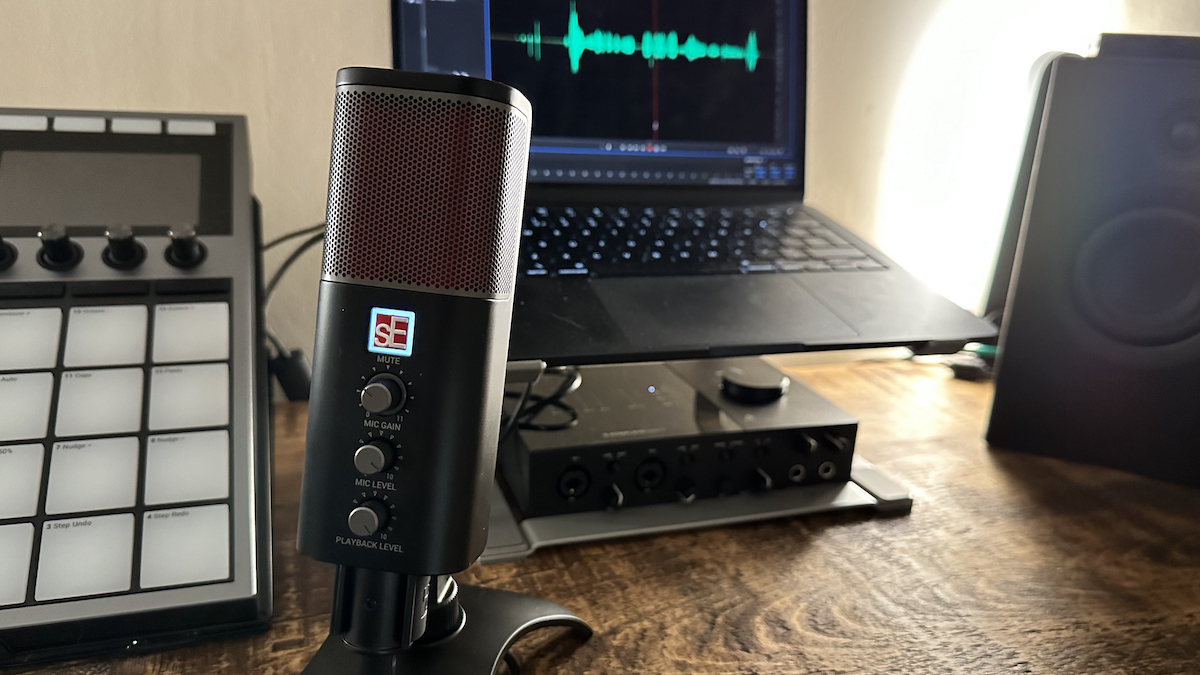MusicRadar Verdict
There’s a lot to like about the sE Neom, including its superb build quality and high fidelity recordings. It’s simple to use, and delivered great results across both speech and instrument recordings. For the price, it’s almost a no-brainer.
Pros
- +
Tough construction
- +
Simplicity defined
- +
High quality recorded sounds
Cons
- -
No on-board noise reduction or filters
- -
Design might not be to everyone’s tastes
MusicRadar's got your back
sE Electronics Neom USB review: What is it?
While there might be a feeling in some quarters that USB microphones aren’t intended for professional use, we’ve found the technology is evolving to the point where the lines between so-called entry-level mics and higher-spec traditional XLR mics are blurring. Ok, you’re never going to rely on a sub-$/£200 USB mic for your one shot at recording the New York Symphony Orchestra, for example, but for many studio tasks, these increasingly ubiquitous tools are becoming loved for their portability, versatile nature and low price.
And now, the big names in the mic world are playing. We’ve seen superb USB mics from Shure and Rode, and now you can add sE Electronics to the list (it also features in our guide to the best budget USB mics). The sE Neom follows the script set out by others, delivering a front address condenser mic, with a cardioid pickup pattern and a promising set of technical specifications, but how does it attempt to stand out in a crowded marketplace?
From the moment I opened the box, it was clear this isn’t a mic that follows design conventions too strictly. It’s taller than other mics in the category, for starters, with onboard controls for gain, mic level and playback levels arranged vertically up the front of the chassis. The gain control has a circular lED around it for relaying visual information on levels, changing to red if the sound is clipping. There’s no automatic gain correction or pad filters here, so this instant feedback is beneficial. I also liked the way the mic gain does indeed go up to 11, proving the music world’s most famous in-joke is still alive and kicking. Thanks, Spinal Tap.
On the Neom’s flat backside is a single 3.5mm connection for headphone monitoring, while the trunk is where you’ll find the Neom’s USB-C connection. The package is completed with a curious-looking metal stand, while connectors for hooking it up to a boom arm or traditional mic stand are also present.
Overall it’s an interesting package, for sure, but how does it perform in the real world? Let’s take a look.
sE Electronics Neom USB review: Performance & verdict

The sE Neom is marketed as being a versatile budget USB mic, equally at home recording voice - the usual wheelhouse for these mics - as it is capturing sound from acoustic instruments like pianos, percussion and guitars. To test the theory, I plugged the Neom into my 2022 MacBook Air, fired up Adobe Audition and tested recording a variety of instruments including a Fender Jazz bass through a small solid-state combo amp, a kalimba and then a standard dreadnought acoustic guitar.

Audio-Technica AT2020XP-USB
Rode NT-USB
Blue Yeti
The kalimba sounded great, with the mic capturing a clean, sample-rich sound which was easy to manipulate in Audition. There was plenty of headroom available, and stacks of gain there if you need it. The Neom also did a decent job of recording my small Orange Crush bass amp. In reality, you probably wouldn’t look to a USB condenser mic for a raging 100w Mesa/Boogie stack, for example, but for home-based studios where there’s a need to record as quickly as inspiration hits, it worked perfectly.
With the acoustic guitar, I tested the Neom in conjunction with a couple of other mics to offer a proper comparison. Alongside the Neom I employed the Audio Technica AT2020USB-XP and a Neumann TLM102 which, despite not being a USB mic, has always been my go-to mic for recording acoustic guitars. As you’d expect, the Neumann’s recordings were a cut above in terms of fidelity and detail, but what surprised me was that the sE Neom wasn’t a million miles away in capturing the nuances of some of the more delicate parts I recorded.
The fact it operates without the need for a USB audio interface is an obvious benefit too, meaning I’d happily take the Neom away with me for a quick and simple recording solution.

Compared to the Audio Technica, you begin to see a difference in quality, with the Neom offering more in the way of usable headroom. What it lacks, however, is any on-mic noise reduction - a big tick in the AT2020USB-XP’s box - however provided you use a sturdy stand or boom arm you should be able to correct any low-frequency rumbling in post-production. I also wish the Neom had come with a separate pop filter, particularly as it presents itself as being a great option for speech recording, although you can pick up aftermarket attachments fairly inexpensively if you shop around. Not a dealbreaker, but worth keeping in mind when you’re making comparisons.
On the subject of speech recording, the Neom does a superb job of capturing the spoken word, meaning this is a superb mic for podcasts, voiceovers, vlogs and streaming. Its simplicity means you don’t need to know every detail of how the mic works to get the best out of it, and the inherent quality of build and construction means it’s an investment you’ll only need to make once. A quick note about compatibility - the Neom works perfectly with MacOS, Windows, iOS and Android, so we can see a situation where we’d use a ‘traditional’ mic to record an instrument but then employ the Neom with a smartphone to capture a video of the performance at the same time.
Overall, sE has focused on delivering as much quality and compatibility as it can, while keeping the price in line with similar products. We liked the fidelity and clarity we got from the test recordings, and would have no problems recommending it as a versatile studio mic for small home setups.
sE Electronics Neom USB review: Hands-on demos
Dark Corner Studios
James Younger

Matthew Haines
sE Electronics Neom USB review: Specifications
- Type: Condenser
- Sample rate: Up to 192kHz
- Bit depth: 24-bit
- Frequency range: 20Hz to 20kHz
- Polar pattern: Cardioid
- Connectivity: USB-C
- Contact: sE Electronics
Chris Corfield is a journalist with over 12 years of experience writing for some of the music world's biggest brands including Orange Amplification, MusicRadar, Guitar World, Total Guitar and Dawsons Music. Chris loves getting nerdy about everything from guitar and bass gear, to synths, microphones, DJ gear and music production hardware.
“KIKI BOY 2025”: Frank Ocean appears to be teasing something... or other
“This is great. I knew I was getting to them! I’m so happy. It’s such a good feeling”: Spotify bites back at Kate Nash
“The included sample content is not only unique but sonically amazing, as it always was”: Spitfire Audio BBC Radiophonic Workshop review












